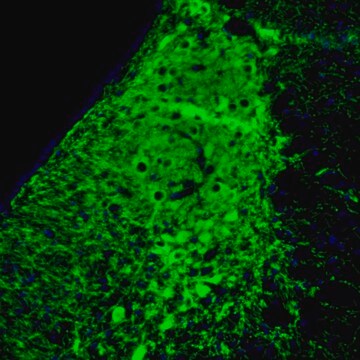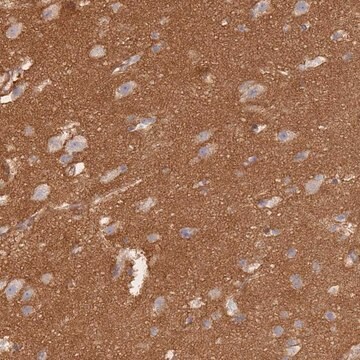ABE2945
Anti-phospho EZH2 (Thr345)
Sinónimos:
Histone-lysine N-methyltransferase EZH2;EC:2.1.1.356;ENX-1;Enhancer of zeste homolog 2;Lysine N-methyltransferase 6
About This Item
Productos recomendados
biological source
rabbit
Quality Level
antibody form
purified antibody
antibody product type
primary antibodies
mol wt
calculated mol wt 85.36 kDa
observed mol wt ~85 kDa
purified by
affinity chromatography
species reactivity
human
species reactivity (predicted by homology)
feline, frog, bovine, canine, mouse, monkey
packaging
antibody small pack of 100 μL
technique(s)
immunocytochemistry: suitable
western blot: suitable
isotype
IgG
epitope sequence
Internal
Protein ID accession no.
UniProt accession no.
storage temp.
2-8°C
target post-translational modification
phosphorylation (pThr345)
Gene Information
human ... EZH2(2146)
Categorías relacionadas
General description
Specificity
Immunogen
Application
Evaluated by Western Blotting in LNCaP cell lysate.
Western Blotting Analysis (WB): A 1:1,000 dilution of this antibody detected EZH2 phosphorylated on threonine 345 in LNCaP cell lysate, but not in lysates treated with protein phosphatase (400 units for 30 min at 30°C).
Tested applications
Immunocytochemistry Analysis: A representative lot detected phospho EZH2 (Thr345) in Immunocytochemistry applications (Chen, S., et. al. (2010). Nat Cell Biol. 12(11):1108-14).
Note: Actual optimal working dilutions must be determined by end user as specimens, and experimental conditions may vary with the end user
Physical form
Reconstitution
Storage and Stability
Other Notes
Disclaimer
¿No encuentra el producto adecuado?
Pruebe nuestro Herramienta de selección de productos.
Storage Class
12 - Non Combustible Liquids
wgk_germany
WGK 1
flash_point_f
Not applicable
flash_point_c
Not applicable
Certificados de análisis (COA)
Busque Certificados de análisis (COA) introduciendo el número de lote del producto. Los números de lote se encuentran en la etiqueta del producto después de las palabras «Lot» o «Batch»
¿Ya tiene este producto?
Encuentre la documentación para los productos que ha comprado recientemente en la Biblioteca de documentos.
Nuestro equipo de científicos tiene experiencia en todas las áreas de investigación: Ciencias de la vida, Ciencia de los materiales, Síntesis química, Cromatografía, Analítica y muchas otras.
Póngase en contacto con el Servicio técnico








